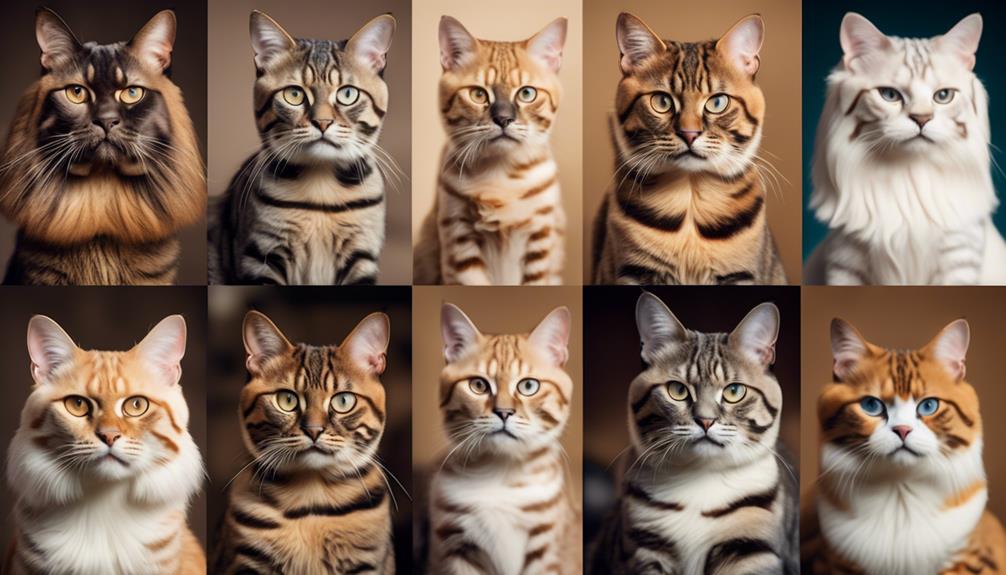
Welcome to the fascinating world of Exotic Cat breeds, where elegance and charm converge.
These captivating felines have garnered attention for their unique appearance and gentle nature.
But what sets them apart from other breeds?
In this discussion, we will explore the origins, distinctive characteristics, and intriguing traits that make Exotic Cats a standout choice for those seeking a feline companion.
From their plush coats to their expressive eyes, there is much to discover about these captivating creatures.
So, let us embark on a journey into the alluring realm of Exotic Cats and unlock the secrets behind their enduring popularity.
Key Takeaways
- The Exotic Cat is a medium-sized breed known for its gentle and affectionate temperament.
- They are sociable and adaptable to indoor environments, making them a great choice for families.
- Regular grooming, including brushing and cleaning the corners of the eyes, is necessary to maintain their short, plush coat.
- While generally healthy, Exotic Cats can be prone to certain health issues related to their facial structure, such as brachycephalic syndrome and eye problems.
Origin and History
The origin and history of Exotic cats can be traced back to the United States in the 1960s, when they were developed by crossing Persians with American Shorthairs.
This deliberate breeding program aimed to create a new breed that possessed the Persian’s luxurious coat but with a shorter, more manageable length.
The resulting cats had the same gentle and affectionate temperament as Persians, but with a more robust and athletic build.
Initially, the Exotic breed faced some controversy, as traditional Persian breeders were skeptical of the new look.
However, their unique appearance quickly captivated cat enthusiasts worldwide.
In 1967, the Cat Fanciers Association officially recognized the Exotic, solidifying its place as a distinct and sought-after breed.
Today, Exotic cats are cherished for their distinctive appearance and loving nature, making them a delightful addition to any feline-loving household.
See another cat breed profile.
Foldex Mixed Cat Breed
Size and Weight
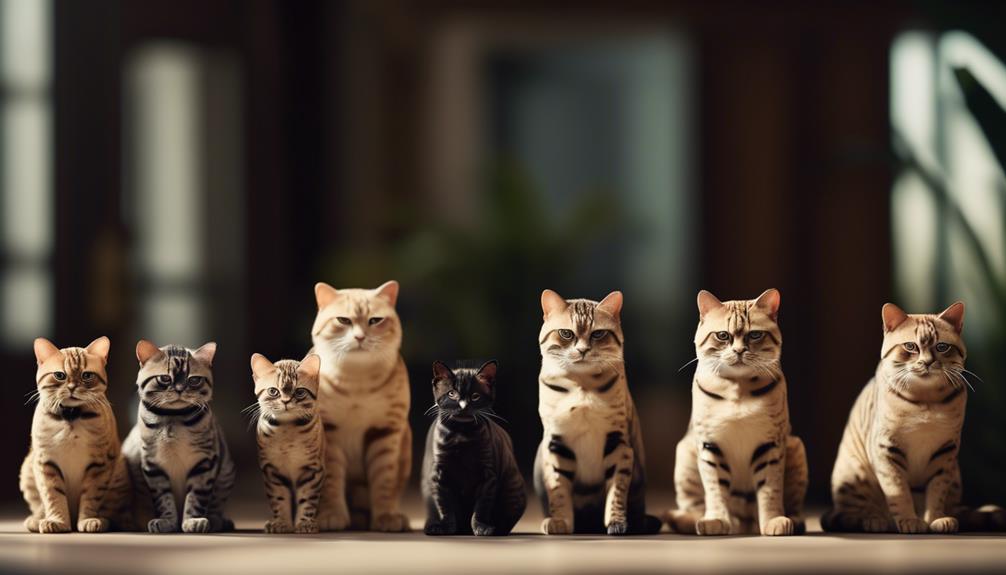
Exotic cats are a medium-sized breed, typically weighing between 7 to 12 pounds.
They have a compact and muscular build, which gives them a sturdy appearance.
Despite their relatively small size, they are known for their big, expressive eyes and flat-faced look.
These cats were developed in the 1950s by crossing Persians with American Shorthairs and later bred with other shorthaired breeds to achieve the desired short coat.
Recognized by the Cat Fanciers Association in 1967, the Exotic breed captivates cat enthusiasts worldwide with their distinctive appearance and affectionate nature.
Their medium size makes them adaptable to various living environments, and they can be a delightful addition to any feline-loving household.
Breed Group and Characteristics
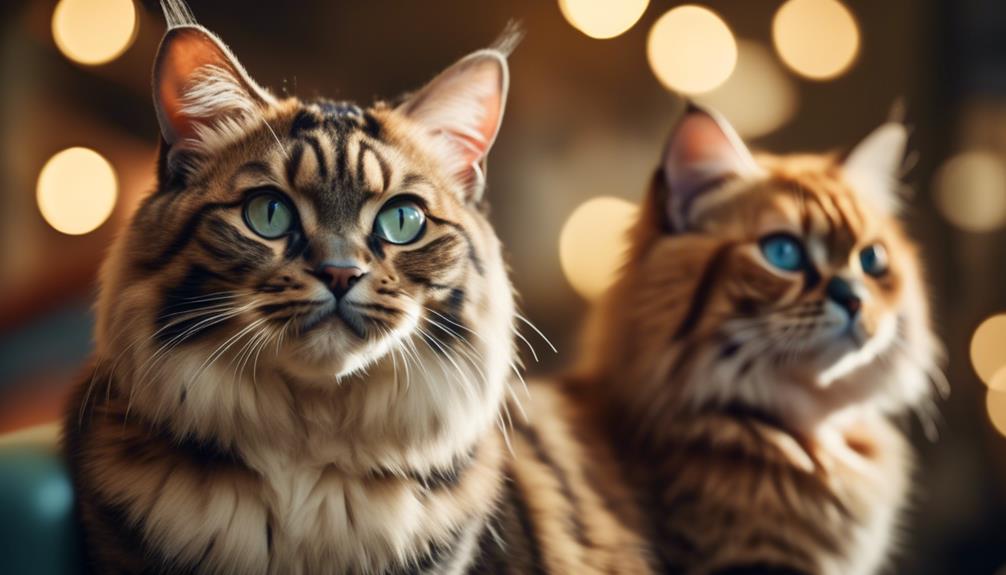
The Exotic cat breed belongs to the shorthair group and is characterized by its distinct traits and temperament.
This breed group is known for the following characteristics:
- Compact and muscular build: Exotic cats have a sturdy and well-proportioned body, giving them a strong and athletic appearance.
- Large, expressive eyes and flat-faced look: One of the defining features of Exotic cats is their big, round eyes that captivate anyone who looks into them. They also have a flat-faced look, similar to their Persian ancestors.
- Minimal grooming required for their short coat: Unlike their long-haired Persian relatives, Exotic cats have a short, thick, and plush coat that requires less maintenance. This makes them a great choice for those who prefer a low-maintenance grooming routine.
Lifespan and Health
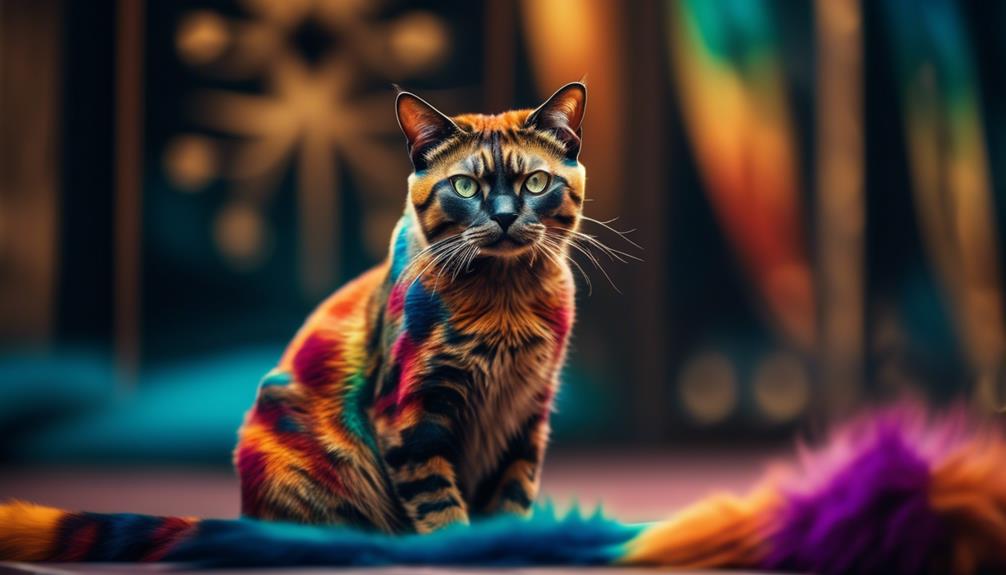
Exotic cats have a lifespan ranging from 12 to 15 years, making them a long-lived breed of cat.
While they are generally a healthy breed, exotic cats are prone to certain
health conditions, many of which are related to their facial structure. These include brachycephalic syndrome, dental malocclusions, excessive tearing, and eye conditions such as entropion.
Other health concerns for exotic cats include heat sensitivity, polycystic kidney disease (PKD), ringworm, and seborrhea oleosa (oily seborrhea).
To highlight the health concerns of exotic cats, the following table provides a summary of the most common health conditions:
| Health Concerns | Description |
|---|---|
| Brachycephalic Syndrome | Difficulty breathing due to their flat face |
| Dental Malocclusions | Abnormal alignment of the teeth |
| Excessive Tearing | Overflow of tears from the eyes |
| Eye Conditions | Issues with the eyelids or cornea |
| Heat Sensitivity | Intolerance to high temperatures |
| Polycystic Kidney Disease (PKD) | Genetic disorder affecting the kidneys |
| Ringworm | Fungal infection of the skin |
| Seborrhea Oleosa | Excessive oiliness of the skin |
Despite these health concerns, exotic cats are adaptable and can thrive in homes with children and cat-friendly dogs.
It is important to choose a reputable breeder to avoid unethical breeding practices, and adopting from rescue organizations or shelters is highly encouraged.
Coat Color and Patterns
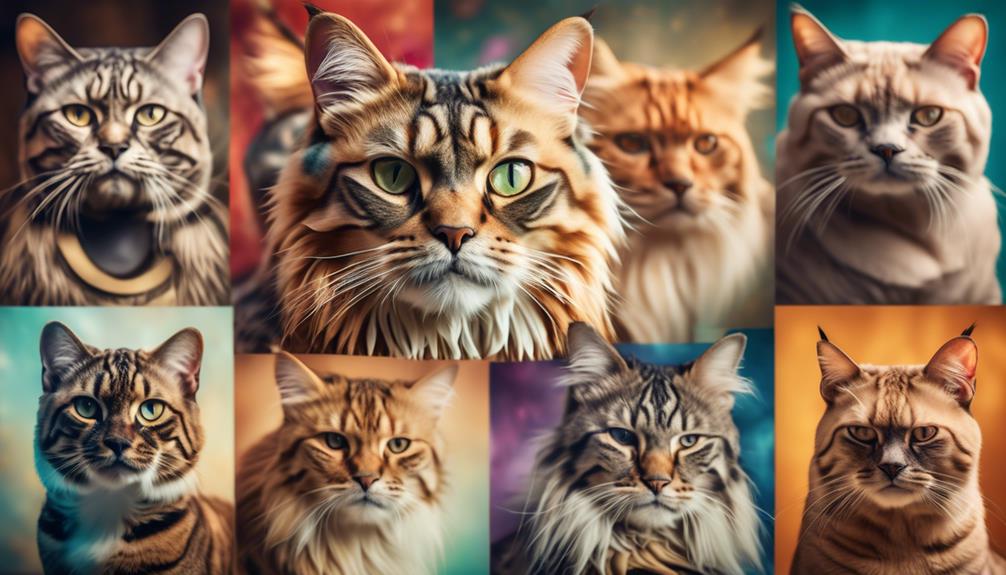
With regards to the appearance of exotic cats, their coat color and patterns exhibit a wide range of variety.
Here are three key points to understand about the coat color and patterns of exotic cats:
- Color: Exotic cats can come in various colors, including black, white, blue, cream, red, and tortoiseshell. They can also have colorpoint patterns like Siamese cats, where their ears, tail, and paws are darker than the rest of their body.
- Tabby Patterns: Exotic cats can have different tabby patterns on their coat, such as classic, mackerel, spotted, and ticked. These patterns create unique markings and add to the beauty of their appearance.
- Bi-Color and Van Patterns: Some exotic cats may have bi-color or van patterns, where they have two distinct colors on their coat. Bi-color patterns typically have one color covering most of the body, with another color on the face, paws, and tail. Van patterns, on the other hand, have a solid color on the head and a contrasting color on the body.
These variations in coat color and patterns make exotic cats visually stunning and a delight to behold.
Temperament and Personality
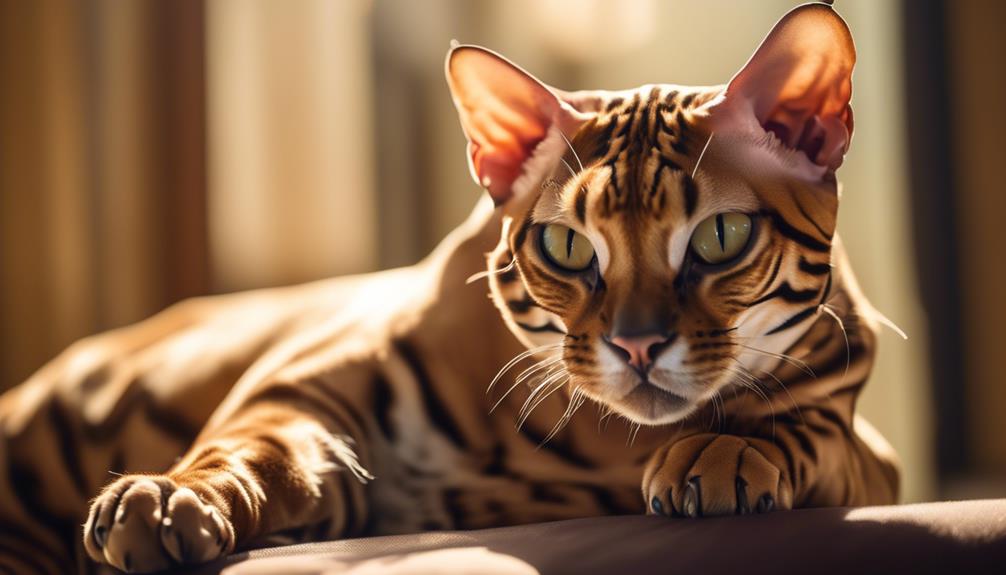
One notable aspect of exotic cats is their gentle and affectionate temperament.
These cats are known for their calm and easygoing nature, making them wonderful companions for individuals and families alike.
Exotics are often described as being loving and friendly, forming strong bonds with their owners.
They enjoy being in the presence of their human companions and are often found lounging nearby or seeking attention and affection.
While they may be playful when they are young, Exotics generally have a more relaxed and laid-back demeanor as they mature.
They are sociable cats that thrive in indoor environments, making them well-suited for apartment living.
With their adaptable nature and willingness to be trained, Exotics can easily fit into various lifestyles and provide years of joy and companionship.
Grooming and Care
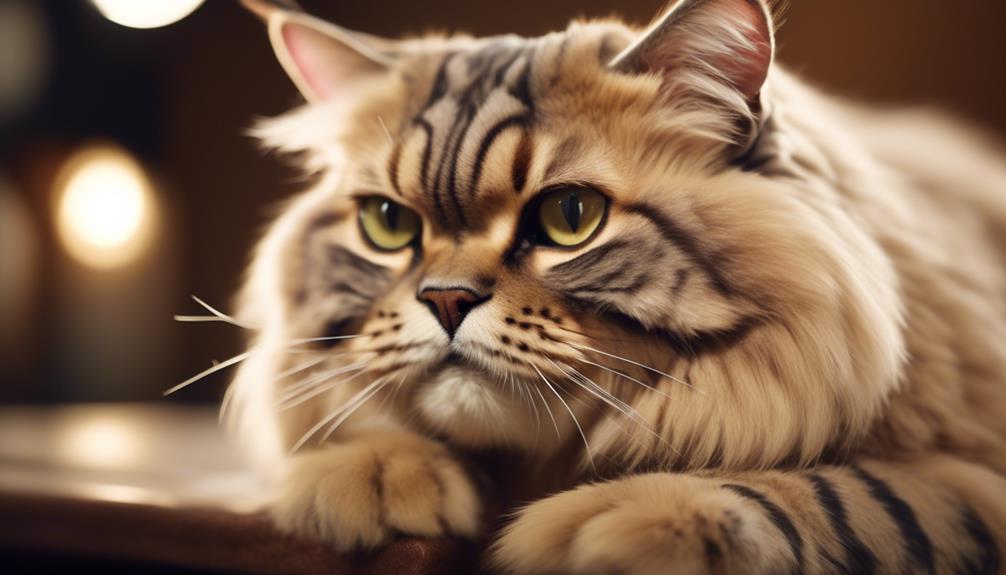
To properly care for an Exotic cat, it is essential to establish a regular grooming routine.
This will help keep their short, thick, and plush coat in optimal condition. Here are three important aspects to consider when grooming and caring for an Exotic cat:
- Brushing: Exotic cats have a dense coat that can easily become matted. Regular brushing is necessary to remove dead hair and prevent tangles. A stainless steel comb or a slicker brush can be used to gently groom their fur.
- Eye cleaning: Exotic cats are prone to tear stains and eye discharge due to their flat facial structure. It is important to clean the corners of their eyes daily using a soft, damp cloth or a specialized eye wipe.
- Dental care: Like any other cat breed, Exotics require dental care to prevent periodontal disease. Regular teeth brushing with a cat-friendly toothpaste and toothbrush is recommended to maintain their oral health.
Training and Adaptability
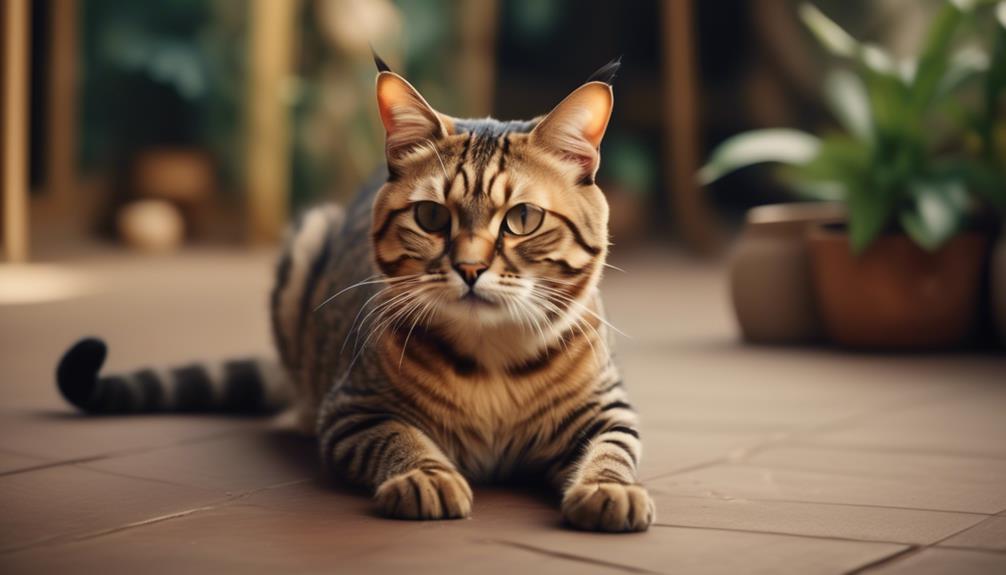
Exotic cats are known for their adaptability and trainable nature, making them an ideal choice for cat owners looking for a versatile and responsive companion.
These cats are quick to learn and can be taught various commands and tricks with positive reinforcement.
Their intelligence and willingness to please make them highly adaptable to different training methods.
Exotic cats are known to be less demanding than their Persian cousins, making them easier to train and handle.
They thrive in indoor environments and are sociable, enjoying the company of their owners.
With regular training and socialization, Exotic cats can become well-behaved and obedient pets.
Their trainable nature and adaptability make them a wonderful addition to any feline-loving household.
Common Health Concerns
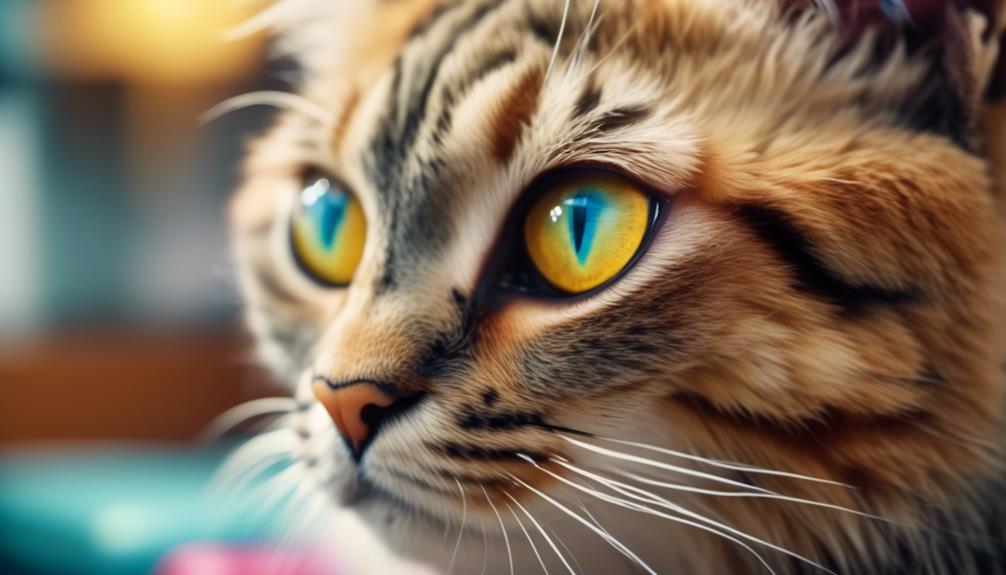
Moving on to the topic of health, it is important to address the common health concerns associated with Exotic cats.
Here are three common health concerns to be aware of:
- Brachycephalic Syndrome: Due to their facial structure, Exotic cats may experience breathing difficulties. This can lead to snoring, wheezing, and a reduced tolerance for exercise.
- Eye Problems: Exotic cats are prone to various eye conditions, including entropion, which is the inward rolling of the eyelids. This can cause irritation, redness, and discomfort for the cat.
- Polycystic Kidney Disease (PKD): This hereditary condition is common in Exotic cats. It causes the formation of fluid-filled cysts in the kidneys, which can lead to kidney failure if left untreated.
Compatibility With Children and Dogs

When considering the compatibility of Exotic cats with children and dogs, it is essential to evaluate their temperament and socialization abilities.
Exotic cats are known for their gentle and affectionate nature, making them adaptable and suitable for households with children.
Their calm demeanor and love for attention make them playful companions.
However, it is crucial to supervise interactions between young children and cats to prevent accidental harm.
Exotic cats can also get along well with cat-friendly dogs, especially if introduced and socialized properly from a young age.
It is important to note that every cat’s personality can vary, so it is recommended to introduce them gradually and monitor their behavior to ensure a harmonious and safe environment for everyone involved.
Adoption and Rescue Organizations
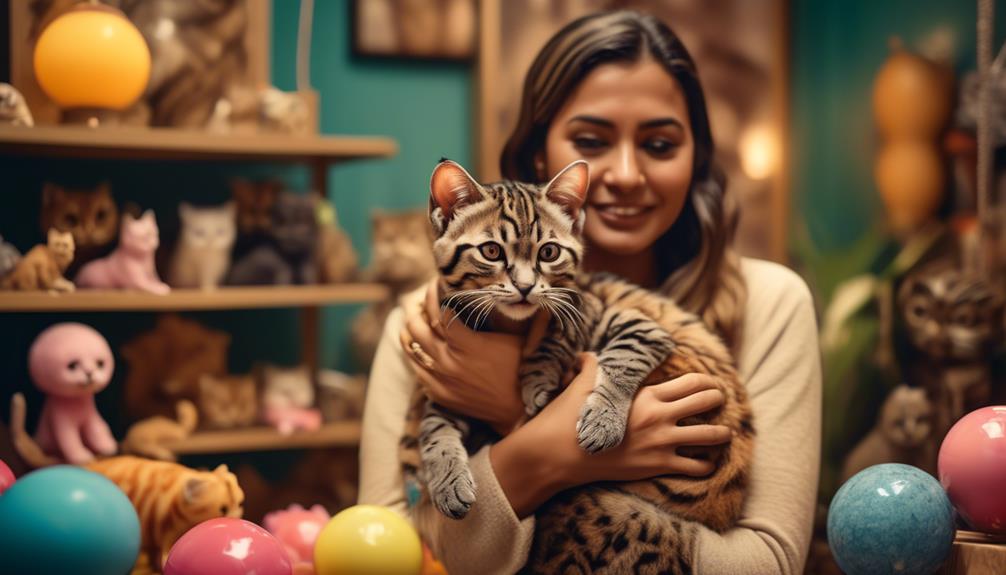
Adoption and rescue organizations play a crucial role in finding loving homes for Exotic cats in need.
These organizations provide a safe haven for abandoned, neglected, or surrendered Exotic cats, ensuring they receive proper care and attention while waiting for their forever homes.
Here are three reasons why adoption and rescue organizations are essential:
1) Saving Lives: By adopting from a rescue organization, individuals give Exotic cats a second chance at life.
These organizations rescue cats from various situations, including hoarding, abuse, and neglect, providing them with the opportunity to live a happy and fulfilling life.
2) Matching the Right Cat with the Right Home: Adoption and rescue organizations carefully assess the temperament and needs of each Exotic cat, allowing them to match the cat with a suitable adopter.
This ensures a successful and long-lasting adoption, benefiting both the cat and the new owner.
3) Educating and Supporting Adopters: Adoption and rescue organizations provide valuable resources and support to adopters, helping them navigate the challenges of caring for an Exotic cat.
They offer guidance on proper nutrition, grooming, and health care, ensuring that the cat receives the best possible care throughout its life.
Frequently Asked Questions
Are Exotic Cats Hypoallergenic?
Exotic cats are not hypoallergenic.
While they have shorter fur than their Persian counterparts, they still produce allergenic proteins in their saliva and dander that can trigger allergies in sensitive individuals.
Do Exotic Cats Require a Special Diet?
Exotic cats do not require a special diet.
However, it is important to provide them with a balanced and nutritious diet that meets their specific needs.
Consult with a veterinarian for dietary recommendations tailored to your exotic cat’s health and individual requirements.
How Much Exercise Do Exotic Cats Need?
Exotic cats, like all cats, need regular exercise to maintain a healthy weight and overall well-being.
Engaging them in interactive play sessions, providing climbing structures, and offering toys can help meet their exercise needs.
Can Exotic Cats Be Trained to Use a Litter Box?
Exotic cats, like any other cats, can be trained to use a litter box.
With consistent positive reinforcement and patience, they can learn to associate the litter box with elimination and use it appropriately.
Are Exotic Cats Prone to Obesity?
Exotic cats, like other cat breeds, can be prone to obesity if not properly managed.
It is important to provide them with a balanced diet, regular exercise, and monitor their weight to prevent obesity-related health issues.
Conclusion
In conclusion, Exotic Cats are a unique breed known for their distinctive appearance and affectionate nature.
Developed through crossbreeding Persians and American Shorthairs, these cats have a medium size and weight range of 7 to 12 pounds.
With their plush, short coats and large, expressive eyes, they require minimal grooming compared to Persians.
However, it is important to be aware of certain health concerns related to their facial structure.
Overall, Exotic Cats make wonderful additions to feline-loving households with their sociable and adaptable nature.




